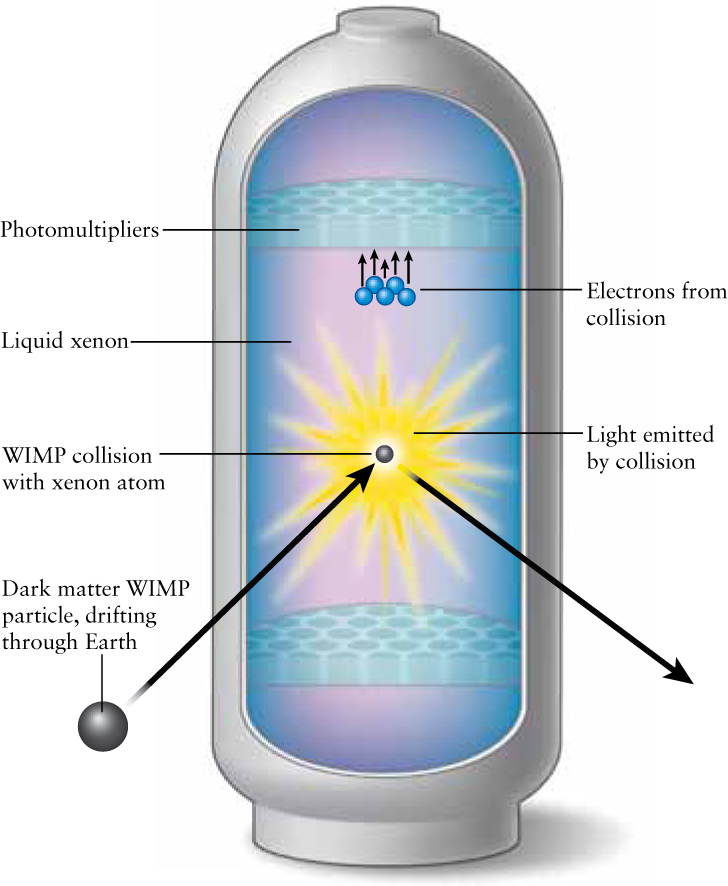
Figure 22-21: Detecting Dark Matter WIMPs This detector sits near the bottom of an old gold mine 4850 feet underground. If a WIMP collides with a xenon particle, the so-called weak interaction ends up producing light that can be detected by photomultipliers. Electrons are also produced in collisions to varying degrees, which helps to determine if the collisions were actually due to WIMPs, and not some other particle. While Earth shields out cosmic rays that would otherwise overwhelm the many fewer WIMP detections, the tank shown here is also surrounded by 72,000 gallons of water that helps to shield neutrons (also a source of noise) that are emitted by natural radioactivity from the surrounding rock.